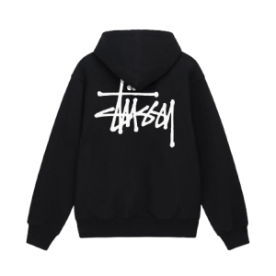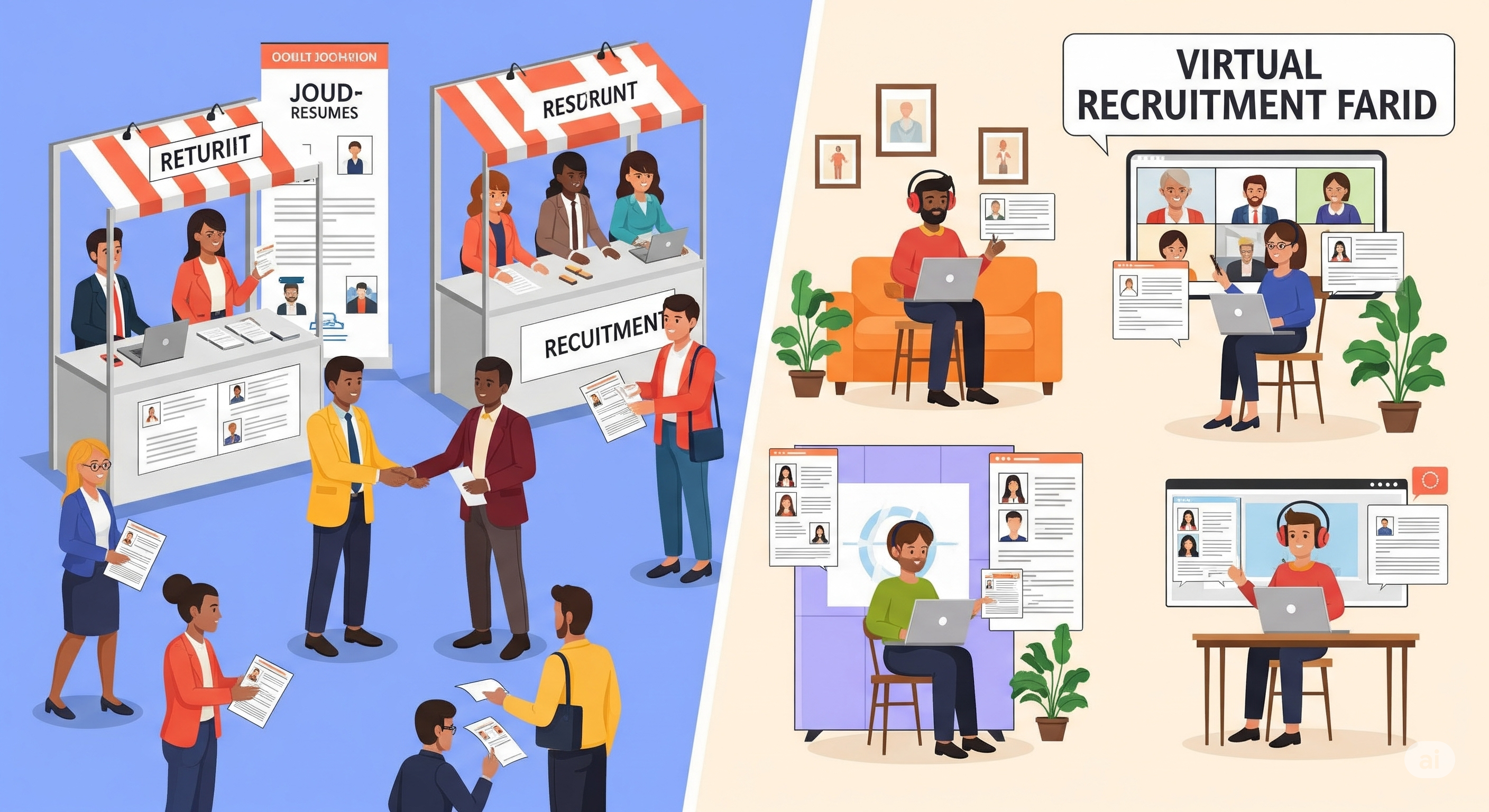The current generation of young professionals and recruiters finds itself balancing the world of physical and digital. With the advancement of technology for almost all things, why should recruitment be left out of this sphere? Here comes virtual recruitment fairs, transforming the traditional way of job seeking. These types of recruitment fairs are based on in-person job fairs, but they differ in some cases, and we will discuss those differences at greater length in this blog.
In-Person Job Fairs
Job fairs bring together lots of job seekers in one place. They walk through the halls and talk face-to-face with recruiters from different companies. Some of the benefits of in-person hiring events are listed below:
- Real-Life Communication: When you are face-to-face with a recruiter, they can gauge what a candidate is really like. The way you talk, carry yourself, and your body language is visible, and recruiters can decide based on this if you would be a good fit.
- Brand presentation: This gives candidates a chance to see the company up close, as they put a lot of effort into their booths at In-person job fairs. Companies want to show off what they work for and what the company culture is. This setup helps candidates remember a specific company and get an idea of their overall working environment.
- Networking: It’s not just about meeting up with recruiters. Traditional in-person job fairs are great for meeting other job seekers and learning about different industries. You might bump into someone who turns out to be a great resource or introduces you to a new career idea that has not been cracked yet.
Virtual Recruitment Fairs
Virtual hiring fairs have changed the game for companies and job seekers when it comes to getting to know each other. These online events mean you’re not limited by location, and they cut out a lot of the travel and planning that come with traditional job fairs. Here are the benefits of virtual recruitment fairs:
- Reaching a wide audience: A company in one part of the world can easily connect with someone in a far-off corner of the world, and can find talent from anywhere. This means companies can find people with unique and diverse skills, and job seekers have more options. It naturally brings in a wider range of people, which is always a good thing.
- Saving Financial resources: With a virtual recruitment fair, most of the costs, like renting a space, travel for staff, and printing brochures, are not incurred. Companies can then use that money for other important things, like making their brand promising to job seekers.
- Getting insights into industries: Virtual recruitment fairs collect lots of data. You can see how many people visited a booth, how many resumes were downloaded, and what questions were asked. This information helps companies understand what works best and improve their future hiring plans. It’s like getting a detailed report card for your recruitment.
- Easy and Flexible: You just need an internet connection to join, whether you’re on a laptop, tablet, or phone. Many virtual recruitment fairs also let you check out content and apply for jobs even after the live event, so you can fit it into your schedule. No need to rush to a physical location.
- Sustainable and Eco-friendly: Less travel, less printing, and less physical setup mean less waste and pollution. For companies that care about being green, this is a clear benefit.
Key Differences Between Virtual Recruitment Fairs and In-Person Job Fairs
While both types of fairs aim to connect job seekers with companies, their core mechanics and impacts differ significantly
- Location and Accessibility: In-person job fairs take place at a physical location, so only those who can travel there can go. Virtual job fairs are entirely online, allowing anyone with internet access to join from anywhere, making them easier to access.
- Interaction Styles: At in-person hiring events, you meet people face to face. Online events use chats, video calls, and presentations. Meeting in person lets you see body language right away. Virtual hiring fairs are good for reaching many people using well-organized online tools.
- Cost and Logistics: In-person hiring events often cost more since you have to rent a place, set up booths, pay for travel, and print materials. Virtual hiring fairs cut many of these costs, making them less expensive. Planning virtual events focuses more on the tech and online content.
- Data Collection: In-person hiring events don’t give much detailed info on how people act, often relying on simple counts or surveys. Virtual job fairs track details, showing how people interact, which companies are liked, and how well the event did.
What’s Next for Recruitment Fairs?
It’s not about one type of fair replacing the other completely. Both have their strengths. Sometimes, you just can’t beat a face-to-face chat to build a connection. But the sheer number of people you can reach and the data you get from a virtual job fair are also super powerful.
Many companies are now trying a mix of both. Maybe they’ll use a virtual hiring fair first to find a lot of potential candidates, and then invite the best ones to smaller, in-person hiring events. Or, they might use virtual fairs for jobs that can be done remotely and keep In-person events for jobs that need someone on-site.
Conclusion
The future of hiring is all about being flexible. By understanding what each type of fair does best, companies can make choices that help them reach their hiring goals and find the right people for the right jobs. Whether you’re looking for work or trying to hire, knowing about both options opens up a lot of possibilities.





